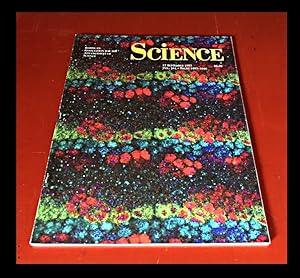Lloyd Seth Giovannetti Vittorio Maccone (1 results)
Product Type
- All Product Types
- Books (1)
- Magazines & Periodicals
- Comics
- Sheet Music
- Art, Prints & Posters
- Photographs
- Maps
-
Manuscripts &
Paper Collectibles
Condition
- All Conditions
- New
- Used
Binding
- All Bindings
- Hardcover
- Softcover
Collectible Attributes
- First Edition
- Signed
- Dust Jacket
- Seller-Supplied Images
- Not Printed On Demand
Seller Location
Seller Rating
-
Quantum-enhanced Positioning and Clock Sychronization in Nature, 412, July 26, 2001, pp. 417-419
Published by Macmillan, London, 2001
Seller: Atticus Rare Books, West Branch, IA, U.S.A.
First Edition
1st Edition. FIRST EDITION IN ORIGINAL PICTORIAL WRAPS OF A 2001 PAPER C-AUTHORED BY SETH LLOYD. The authors "exploit â??quantum weirdness' [in an effort to] dramatically improve the precision of radar, sonar, the global positioning system and other object locators.[They] propose "that taking advantage of the quirky nature of certain quantum pulses would create a significantly more accurate object locator" (Ball, Nature Online, 2002). "The precision with which objects can be located depends on the accuracy with which the arrival time of the pulses can be determined. â??Our work shows that by exploiting 'quantum weirdness,' one can in principle dramatically enhance the precision of such pulse-timing methods,' Lloyd said. â??Counterintuitive features of quantum mechanics such as entanglement (quantum correlations that are 'excessive,' or greater than classical) and squeezing (the reduction of quantum noise levels below their semiclassical limit) can be employed to overcome the classical limits in these procedures'" (Halber, Quantum Weirdness, MIT, 2001) Seth Lloyd, a self-proclaimed â??quantum mechanic', is a professor of mechanical engineering and physics at MIT (MIT). His research area "is the interplay of information with complex systems.He has performed seminal work in the fields of quantum systems, quantum computation, quantum communication and quantum biology including proposing the first technologically feasible design for a quantum computer, demonstrating the viability of quantum analog computation, proving quantum analogs of Shannon's noisy channel theorem, and designing novel methods for quantum error correction and noise reduction" (MIT). We offer two of Lloyd's papers separately, his 1993 paper wherein he is the first to "propose the first technologically feasible design for a quantum computer" (WP). We also offer his 1996 paper separately, the 1st proof "that universal computers can be built from quantum mechanical systems" (Stolz, Quantum, 129). The authors argue: "A wide variety of positioning and ranging procedures are based on repeatedly sending electromagnetic pulses through space and measuring their time of arrival. The accuracy of such procedures is classically limited by the available power and bandwidth. Quantum entanglement and squeezing have been exploited in the context of interferometry, frequency measurements, lithography and algorithms. Here we report that quantum entanglement and squeezing can also be employed to overcome the classical limits in procedures such as positioning systems, clock synchronization and ranging. Our use of frequency-entangled pulses to construct quantum versions of these protocols results in enhanced accuracy compared with their classical analogues. We describe in detail the problem of establishing a position with respect to a fixed array of reference points" (Lloyd, 2001, 417). Philip Ball, writing in Nature Online in 2002, explains it this way: "Whereas cricket balls can be bowled with a spin to left or right, two quantum particles can be let loose in an entangled 'superposition' - a mixture of both spin states. The entangled quantum particles' states are interdependent. Only when their spin is measured does their spin state resolve into 'left' or 'right'. Thus, measuring the spin of one particle automatically decides the other. The use of photons whose frequencies are entangled means that photons in a laser pulse no longer arrive at a detector independently, Lloyd's team propose. If the frequency of one pulse depends on that of one of the others, travel times get bunched together, reducing uncertainty in timing. Ten entangled pulses measure up better than ten normal ones - partly because averaging helps to remove random errors. In addition, frequency-entangled pulses improve accuracy more quickly as their numbers increase" (Ball). CONDITION & DETAILS: Original wraps. 4to. Mailing label on front wrap with small rectangular silver sticker. Not ex-libris. Bright and clean inside and out. F.


